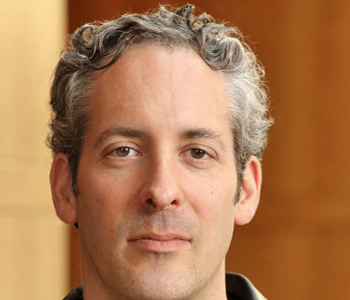John C. Burnham
Accident Prone: A History of Technology, Psychology, and Misfits of the Machine Age
University of Chicago Press
336 pages, 9 x 6 inches
ISBN 978 0226081175
Everybody knows the idea, now usually humorous, that some people have more accidents than other people. Accident proneness was once a technical term, used to separate some people, identified as accident prone, from dangerous situations. The idea rose and fell from the early to the late twentieth century. It moved from Germany and Britain largely to the United States. But the story of accident proneness also reveals an ugly underbelly of technological development: accidents as humans encountered machines. Accident Prone is a book about technological change, about damage to bodies and property, about implicit social systems. It is a work pioneering the field of the history of accidents.
Technology demands uniformity. People, however, differ individually. From this disjuncture came “misfits of the machine age,” who did not adapt to the machines. The idea of accident proneness for decades helped to identify those people. But in the post-industrial age, engineers and psychologists together worked on technology to make the devices and systems reduce risk. They did not see that they were part of a grand social shift that, as this book points out, has now become obvious.

Little did the late-twentieth-century engineers, safety experts, and human factors psychologists realize that they were part of a general social shift as technology came to be the dominant social framework, determining styles of thinking and problem solving.
At the beginning of the twenty-first century, worldwide 1,200,000 people died in traffic accidents alone. A hundred years earlier, industrial accidents were already being counted in the millions. Economic costs were enough to generate corps of experts and social leaders who believed that humans could prevent accidents, and they launched the safety movement. They were joined by many well-meaning people who were appalled by the personal as well as economic costs of the mismatch between humans and machines. But for the most part, the problem of injuries and damage remained little recognized.
Then psychologists noticed that a large percentage of industrial accidents were coming from just a few employees, and the search for accident prone people who could be moved or protected or fired was launched. These psychologists and a number of alert supervisors found that they could use individuals’ accident records to identify accident repeaters and so lower accident rates. Eventually, statisticians cast doubt on the idea of accident proneness as an enduring personal trait. Meanwhile all of society was affected by an insurance model of thinking. In that model, only groups, not individuals, became the objects of concern. At the most, accident prone people became part of a “risk group.” So young, and particularly male drivers paid more for insurance without regard for individual differences.
The most striking change, however, came as engineers began to approach safety by engineering the environments of humans so that they could not get hurt or cause damage. Highway design was the most obvious way to prevent accidents—for example getting rid of certain roadside poles that took out hundreds of cars each year. Psychologists and physiologists began working with engineers to design workplaces, walkways, airplanes, and recreational equipment to fit people instead of worrying about trying to change or isolate the accident prone ones.
Little did the late-twentieth-century engineers, safety experts, and human factors psychologists realize that they were part of a general social shift as technology came to be the dominant social framework, determining styles of thinking and problem solving. If there was a series of accidents in a work site, supervisors did not target particular employees. Instead managers introduced safety guards or equipment changes or environmental changes. Over the years, in advanced economies, it became more and more difficult to press the wrong control or move so as to injure oneself.
Trying to get accident prone people away from dangerous technology did persist in a few areas—but not under that name. The most obvious case was the driver point system, introduced by the state of Connecticut in the 1930s, in which drivers who accumulated a history of traffic errors were denied the right to operate a vehicle. Likewise, airline pilots who made too many mistakes did not last as pilots.
But for most people, accident proneness became a part of folk wisdom, not a technical concept. Accidents had gone from being “acts of God” to matters of individual carelessness and blame. With modern psychology, accident proneness became a trait for which a person was not blamed, but a mark that a person had to have special treatment. With engineering, however, no stigmatizing was necessary—safety resided with the equipment and environment, not the people.
The history of the concept of accident proneness contains two unusual aspects. First, it furnishes a transparent example of simultaneous or multiple discovery in the history of science. As psychologists, factories, and statistics all became conspicuous in Westernized societies around the time of World War I, the idea of accident proneness appeared spontaneously and independently in Germany and Britain. Not until 1926 did developers of the idea become aware of each other. Second, as a pattern of behavioral deviation, the trait of accident proneness should have become a psychiatric syndrome. Despite the widely remarked tendency of physicians to medicalize patterns of behavior, accident proneness never became medicalized and so stands out to show that not all behaviors that could have been, were in fact medicalized in the twentieth century.
A reader of this book would probably be most struck by the many instances of commonplace accidents that one seldom or never thinks about. Human error is everywhere. Workers try to bypass safety devices. Vigilance is often hard to maintain, as when a tram operator was distracted by an attractive woman and did not see the drunk who had fallen asleep on the tracks. Even in large systems, operator error can occur.
Most striking about accident proneness, however, is the fact that a pattern of excess accidents per given individual had been widely recognized, particularly as populations and technological environments grew. But only when a label was applied to the phenomenon did proneness to accident make sense to people. Repeatedly, supervisors would say that they had noticed that some few people were the source of a large proportion of the accidents in the plant or on the rails or roads. When those supervisors heard the term “accident proneness,” they recognized the classification immediately and started to use the idea and anything they heard or learned about it. There was early such testimony from rapid transit executives in Germany and the United States, from manufacturers in Britain and other English-speaking countries. The idea spread because it worked for people.
Not all managers were initially convinced. A British industrial psychology group reported this incident: “Our investigator had obtained accurate records of all accidents for a considerable period, and he found one instance of a boy who had already sustained five minor accidents during the period. As the boy was working in a particularly dangerous job, he was selected, together with several others who also showed high susceptibility, for transfer to other work. Before the transfer could be made, however, he was caught and lost his hand in the machinery he was cleaning. Up to this point, there had been considerable doubt on the part of the managing director as to the need for such a detailed accident survey. Needless to say, those workers who sustained multiple accidents in future were quickly removed from the danger zones.”
Those who worked with groups of children were particularly quick to see the validity of the idea. Commented Helen Ross of Chicago in 1952, “Years ago, before I knew the term ‘accident proneness,’ I recognized in my summer camp [for girls] the tendency among certain children to have more than their share of accidents. ‘There goes Jane again,’ or ‘Who do you suppose fell out of the boat? Mary, of course.’”

What nobody talks about is the radical egalitarianism underlying the engineering of safety. It certainly was never the conscious intention of the engineers who were creating safe environments and devices to make everyone equal in terms of safety, regardless of gender, social status or identification.
The rise of the idea of accident proneness has many striking aspects. The slow death of the idea in the later decades of the twentieth century, however, speaks to more subtle social changes.
Because there was some validity of the idea, it has persisted as part of folk knowledge, referred to in novels, cartoons, and newspaper stories. Some celebrities and even a U.S. President were noted for being accident prone. It was a way of labeling people but not holding them personally responsible for their unfortunate trait. That is, accident proneness was different from carelessness.
Most striking, however, was not the end of accident proneness but the fact that new social conditions brought forth a new approach to accidents and safety. Identifying and stigmatizing accident prone people was appropriate in an age when noticing individuals, particularly out of a commodified labor force, was enlightened. Discriminating against them for employment and driving, however, troubled increasing numbers of experts.
The engineers solved the discrimination problem in large part by applying their safety measures to all people indiscriminately. Moderns will recognize the social style. We all have to put up with inconveniences so that all variety of citizens can have equal protection. So the engineers designed automobiles so that even a drunk would have trouble killing himself or herself. There are rails and other protective devices to protect shaky old people, no matter how much the devices get in the way of more nimble younger people. Or everyone struggles with safety caps on medicine bottles, which save the lives of many thousands of toddlers.
What nobody talks about is the radical egalitarianism underlying the engineering of safety. It certainly was never the conscious intention of the engineers who were creating safe environments and devices to make everyone equal in terms of safety, regardless of gender, social status or identification. The new age of technology in the late twentieth century has social implications that have as yet not been fully explored.
Accident Prone is thus an opening to unexpected insights from attempts to deal with a terrible problem no one likes to talk about, either historically or currently: the unintentional destruction of bodies and property by technology.




We don't put paywalls. We don't distract you with ads. We don't sell your data.
Please help to keep this running!